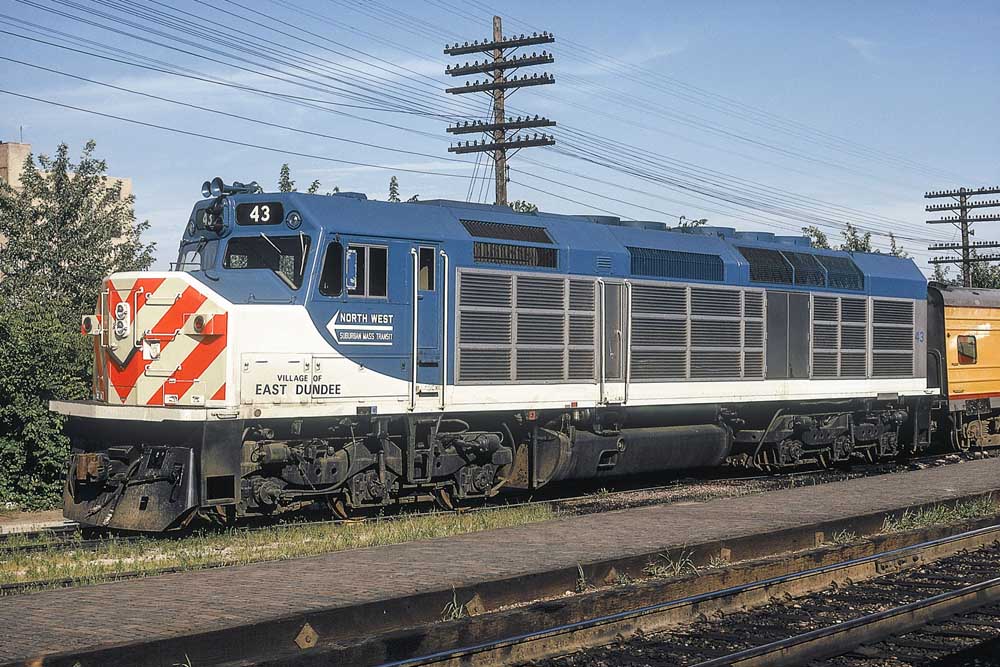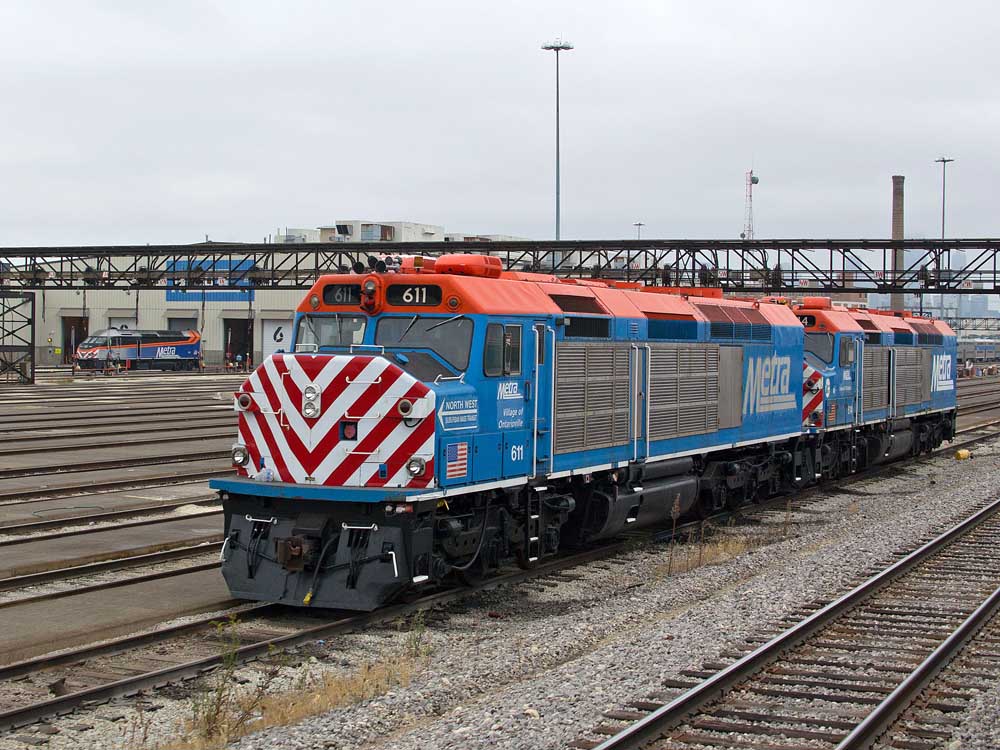
EMD F40C diesel locomotives were six-axle, 3,200-hp units built for Chicago-area commuter service in 1974. They were found on two Milwaukee Road-operated routes out of Union Station, one west to Elgin and one north to Fox Lake.
The units had a cowl body like the Amtrak SDP40F of 1973, but used an alternator to supply train power, and was shorter than the SDP40F. The F40C had distinctive corrugated side panels that made them instantly recognizable, and blue-and-white paint. They carried Nos. 40-54 upon delivery.
The F40C shared the same 68-foot, 10-inch length with the standard freight SD40-2. In contrast, Amtrak’s SDP40F had a length of 72 feet, 4 inches. Despite this difference, both models share similar roof lines, although the SDP40F has a greater length behind the radiator.
Railroad author and historian Brian Solomon describes them as having a “classic well-balanced utilitarian appearance.”
The orders for the units came from the North Suburban Mass Transit District and Northwest Suburban Mass Transit District, two predecessors to today’s Metra. They leveraged public money for capital improvements in the Milwaukee Road’s Chicago-area commuter services. (Another agency secured funding for equipment and facilities upgrades on the South Side commuter operations of the Rock Island.)
“Chicago roads stubbornly resisted Government help, depending on fare hikes alone to cover their expenses and to buy bilevels…” wrote Trains Editor David P. Morgan in the December 1974 issue. “One-by-one, though, the Chicago roads reluctantly subscribed to the (New Haven President George) Alpert doctrine and joined so-called mass-transit districts wherein a mix of Federal and Illinois money funded new F40C’s, double-decked Budds, and other improvements for leaseback to the carriers.”
This public funding was the start of the modern Regional Transportation District and its Metra component that funds and operates commuter rail in the greater Chicago area.
To recognize people and communities, the EMD F40C diesel locomotives were named:
- 600 Village of Bartlett
- 601 City of Elgin
- 602 Village of Bensenville
- 603 Village of Schaumburg
- 604 Village of Elmwood Park
- 605 Village of Hanover Park
- 606 Village of Itasca
- 607 Village of River Grove
- 608 Village of Roselle
- 609 Village of Streamwood
- 610 City of Wood Dale
- 611 Village of Ontarioville
- 612 State of Illinois
- 613 Village of Round Lake
- 614 Edward F. Brabec
After the dissolution of the two Mass Transit District agencies, the units were conveyed to Metra. There they continued to serve on former Milwaukee Road territories, which were owned and operated directly by Metra. Their eventual retirement was brought about by Metra’s acquisition of new MotivePower Industries MP36PH-3S locomotives in the early 2000s.
Two EMD F40C diesel locomotives survive on the Metra roster, Nos. 611 and 614, stored unserviceable.















There was also a West Suburban Mass Transit District that provided the funds to buy and maintain new gallery cars for the BN line to Aurora. Money was also available to do serious rebuilds on the BN Es.
On every RTA line receiving public monies for rolling stock, locomotives and the like a small metal placard was attached indicating funding and ownership by the respective mass transit district.
Did the corrugated side panels serve any functional purpose, or were they purely a decorative design element?